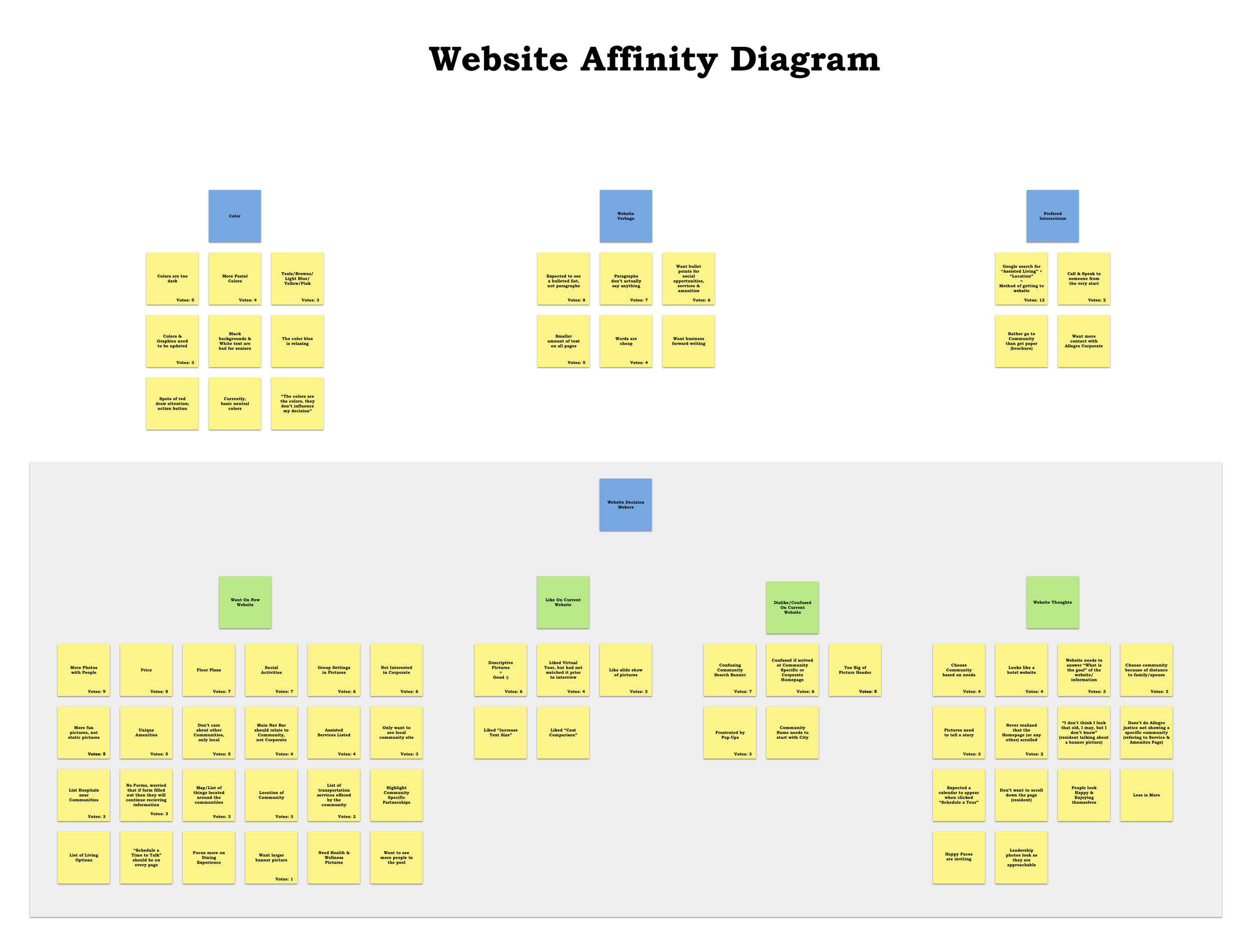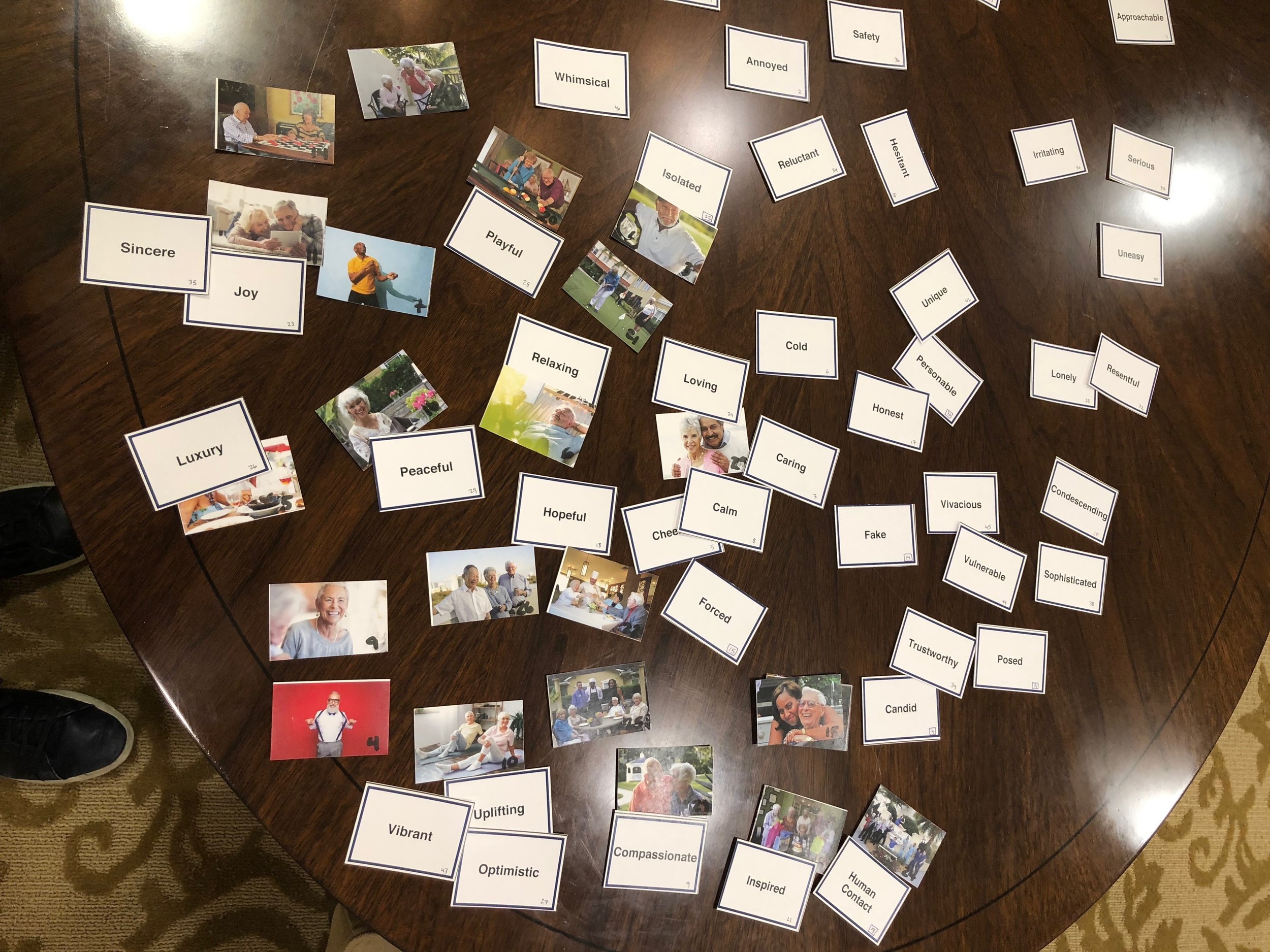Senior Living Website Redesign
Improving Digital Interactions for Seniors

Project Summary
Increased Content Location
40%
A senior living organization partnered with me to research and redesign its website and better support prospective residents, families, and referral partners. Through in-depth field research, persona development, and usability testing, I identified key barriers to accessibility, emotional connection, and navigation. The redesigned website delivered a more intuitive and empathetic experience, improving user confidence, clarity of information, and alignment with the organization’s core values of care and community.
Decreased Confusion
50%
Background
A senior living provider operating a network of communities offering independent living, assisted living, and memory care recognized the need to modernize its digital presence. With growing web traffic and community expansion, the organization aimed to create a more empathetic, user-friendly website that reflected its values of care and community. The existing site was outdated and failed to meet the emotional and informational needs of its audiences. I was engaged to lead a human-centered research initiative to better understand user behaviors and transform the digital experience into one that supports decision-making, builds trust, and reflects the spirit of the communities.
Challenge
The organization faced a complex digital challenge: its website needed to support prospective residents, their adult children, and referral partners, each with distinct goals, comfort levels, and emotional drivers. Despite an increase in traffic and inquiries, users struggled with usability, content clarity, and navigation. Families described the site as confusing, impersonal, and overly corporate, more like a hotel than a home. Frustrations included pop-ups, poor color contrast for aging eyes, unclear value propositions, and inconsistent layouts. Under stress, adult children seeking care options often found the experience overwhelming. The site’s structure made it difficult to find community-specific information and fostered uncertainty that undermined trust.
Solution
To address these challenges, the organization launched an eight-week user-centered research engagement. The process included field research at three communities, interviews, task analysis, card sorting, and focus groups. Four primary personas emerged: independent living prospects, assisted living residents, adult children of aging parents, and referral partners.
Research uncovered how users intuitively organized information, what emotional tone resonated, and how language and visuals influenced trust. The team restructured navigation to align with user expectations and centered the experience around community-specific needs.
Visual storytelling was prioritized, and content was rewritten to convey warmth and reassurance.
The research emphasized accessibility, simplified CTAs, and clarified distinctions between service levels to reduce friction and anxiety during decision-making.
Results
The redesigned experience resulted in a more intuitive, emotionally attuned interface. Visitors could locate essential decision-making details such as floor plans, pricing, and dining offerings more easily. Families and prospective residents reported stronger emotional connections with the imagery and tone, with many saying the site helped them envision life in the community. Card sorting and task analysis showed a 40% improvement in the ability to locate community-specific pages and a 50% decrease in confusion about care levels. Feedback highlighted a preference for light, welcoming color palettes and authentic imagery.
While the site played a vital role in helping families prepare, participants noted that their confidence was solidified during in-person visits, proving the site’s key function as a gateway to real-world engagement.
The UX work clarified the brand voice and significantly improved the digital experience, setting a new standard for digital engagement in senior living.




